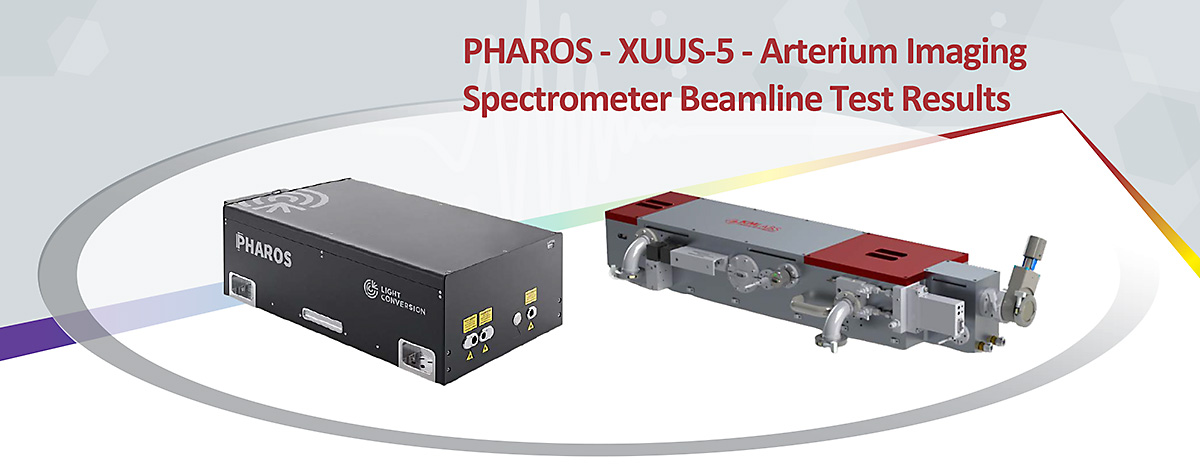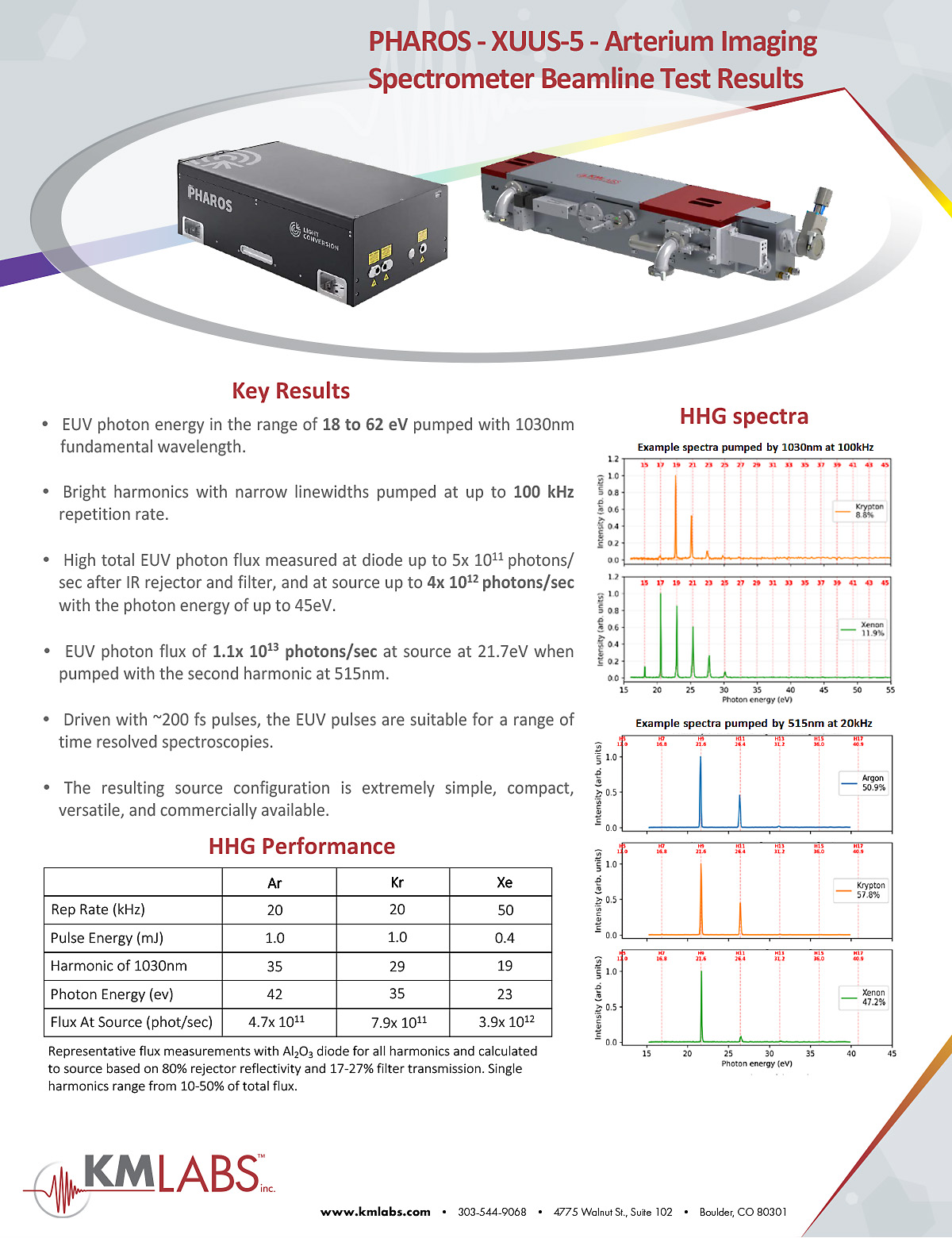Industrial-grade PHAROS femtosecond laser paired with KMLabs’ XUUSTM-5 high-harmonic-generation system produced a high flux, ultrastable, coherent EUV light with photon energies spanning in the range of 18 – 62 eV. KMLabs’ achieved flux levels up to 1013 photons/s and repetition rates of up to 100 kHz – performance levels that enable a host of scientific applications in an ultra-compact setup.

KMLabs and their collaborators in the Kapteyn-Murnane Group at JILA achieved these results working with Professor Fahad Mahmood’s laboratory at the University of Illinois at Urbana-Champaign. Postdoctoral researcher Dr. Tika Kafle, said of the project: “We are excited by the potential for new research capabilities opened up by the PHAROS-driven XUUS.” The ability to generate ultrafast, high repetition rate, coherent EUV/X-ray light enables cutting-edge experiments previously possible only at large-scale synchrotron facilities to be performed in the laboratory. Through its XUUSTM-5 high-harmonic generation (HHG) and ArteriumTM modular-beamline systems, KMLabs is the world leader in providing high-energy photons in a compact desktop apparatus.
Femtosecond lasers PHAROS are widely deployed in industrial applications
Traditionally, Ti:sapphire-based amplifiers with high pulse energies (~mJ) and short pulse durations (10’s of femtoseconds) have been the femtosecond laser of choice to drive HHG. During the last decade, however, industrial-grade, compact, high average power, high-repetition-rate yitterbium-based femtosecond lasers have proven their capabilities across industrial and scientific applications. Since femtosecond laser PHAROS was introduced in 2005, these diode-pumped solid-state ultrafast lasers have provided researchers with a pump laser option that is compact and proven for 24/7/365 turnkey operation. Because these lasers are widely deployed in industrial applications, they are robust and reliable, allowing the researcher to focus attention on scientific tasks, pushing the limits of knowledge.
While Ti:sapphire-based amplifiers are still the most appropriate for applications requiring high flux at high photon energies, e.g. >90 eV HHG, and/or short pulse durations, e.g. ~fs dynamics, the question of whether a commercial industrial-grade yitterbium-based femtosecond amplifier can directly drive a commercial high-harmonic-generation system and generate useful amounts of EUV photons is an important one to address. Previous demonstrations of a commercial yitterbium-based laser pumped HHG focused on <25 eV photon energies with relatively low photon fluxes, and the source design were based on gas-jet or gas-cell geometry.
KMLabs’ reports the generation of higher-order harmonics from 18 to 62 eV from a commercial capillary-based HHG source, i.e. KMLabs’ XUUSTM-5, pumped by the fundamental 1030 nm, of an industrial-grade femtosecond laser, LIGHT CONVERSION’s PHAROS SP, 20 W, 0.2 – 2 mJ, 5 kHz – MHz. The resulting source configuration is extremely simple, compact, versatile, and commercially available. LIGHT CONVERSION’s North America President, Lucian Hand, is very excited about the PHAROS+XUUS results reported here. He notes: “once again, we see PHAROS’ well-known stability and reliability opening up new directions and expanding our horizons, in this case with a reliable EUV source. We congratulate KMLabs on these results and look forward to seeing the research results achieved”.

